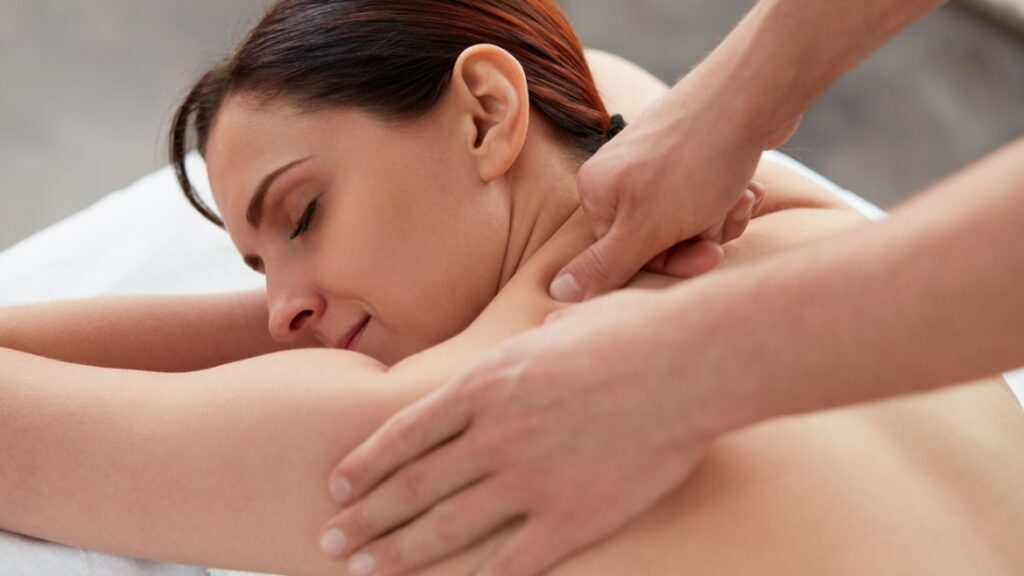
Massage Therapy

Massage and its Benefits
“The physician must be acquainted with many things and assuredly with rubbing. ” – Hippocrates the “Father of Medicine”
Most likely you already know massage is a great way to relieve stress, anxiety, tension, improve sleep, and promote a sense of wellbeing throughout the entire body. But did you know that massage could help with many soft tissue based issues including chronic pain, limited mobility, repetitive strain injuries, and postural problems, just to name a few? For multiple reasons, the body’s soft tissues (muscles, tendons, and connective tissue) can become rigid resulting in limited movement, inflammation, and pain. Therapeutic massage incorporates a variety of advanced modalities that enhance the body’s natural restorative functioning.
Massage is one of the oldest healing arts. The Chinese referenced its use in “The Yellow Emperor’s Classic Book of Internal Medicine” (2,700 BCE). The ancient Hindus, Persians and Egyptians applied forms of massage for many ailments; and Hippocrates wrote papers recommending the use of rubbing and friction for joint and circulatory problems.
Today, massage therapy is part of many physical rehabilitation programs as it is recognized to affect the circulation of blood, lymph flow, reduce muscular tension, stimulate or sedate the nervous system, and enhance tissue healing.
So what is it exactly?
Massage therapy is the scientific manipulation of the soft tissues of the body for the purpose of normalizing those tissues and consists of a group of manual techniques that include applying fixed or movable pressure, holding, and/or causing movement of or to the body. While massage therapy is applied primarily with the hands, sometimes the forearms or elbows are used. These techniques affect the muscular, skeletal, circulatory, lymphatic, nervous, and other systems of the body. The basic philosophy of massage therapy embraces the concept of vis Medicatrix naturae, which is aiding the ability of the body to heal itself, and is aimed at achieving or increasing health and well-being.
There are more than 250 different types of therapeutic massage and many therapists use more than one or even integrate techniques into the sessions.
What is it not?
Massage, bodywork and other therapeutic modalities specifically exclude diagnosis, prescription, manipulation or adjustments of the human skeletal structure, or any other service, procedure or therapy which requires a license to practice orthopedics, physical therapy, podiatry, osteopathy, psychotherapy, acupuncture, or any other profession or branch of medicine.
Benefits of massage
Regardless of the reasons we seek it out, massage therapy can be a powerful addition to your healthcare regimen. Among other benefits, massage can offer:
- Reduction of muscle tension and stiffness
- Relief of muscle spasms
- Greater flexibility and range of motion
- Increase of the ease and efficiency of movement
- Relief of stress and aide of relaxation
- Promotion of deeper and easier breathing
- Improvement of the circulation of blood and movement of lymph
- Relief of tension-related conditions, such as headaches and eyestrain
- Promotion of faster healing of soft tissue injuries, such as pulled muscles and sprained ligaments, and reduction in pain and swelling related to such injuries
- Reduction in the formation of excessive scar tissue following soft tissue injuries
- Enhancement in the health and nourishment of skin
- Improvement in posture through changing tension patterns that affect posture
- Reduction in stress and an excellent stress management tool
- Creation of a feeling of well-being
- Reduction in levels of anxiety
- Increase in awareness of the mind-body connection
- Promotion of a relaxed state of mental awareness Massage therapy also has a number of documented clinical benefits. For example, massage can reduce anxiety, improve pulmonary function in young asthma patients, reduce psycho-emotional distress in persons suffering from chronic inflammatory bowel disease, increase weight and improve motor development in premature infants, and may enhance immune system functioning. Some medical conditions that massage therapy can help are: allergies, anxiety and stress, arthritis, asthma and bronchitis, carpal tunnel syndrome and other repetitive motion injuries, chronic and temporary pain, circulatory problems, depression, digestive disorders, tension headache, insomnia, myofascial pain, sports injuries, and temporomandibular joint dysfunction.
Increase the benefits with frequent visits
Getting a massage can do you a world of good. And getting massage frequently can do even more. Budgeting time and money for bodywork at consistent intervals is truly an investment in your health. Consider massage appointments a necessary piece of your health and wellness plan, and work with your practitioner to establish a treatment schedule that best meets your needs.
